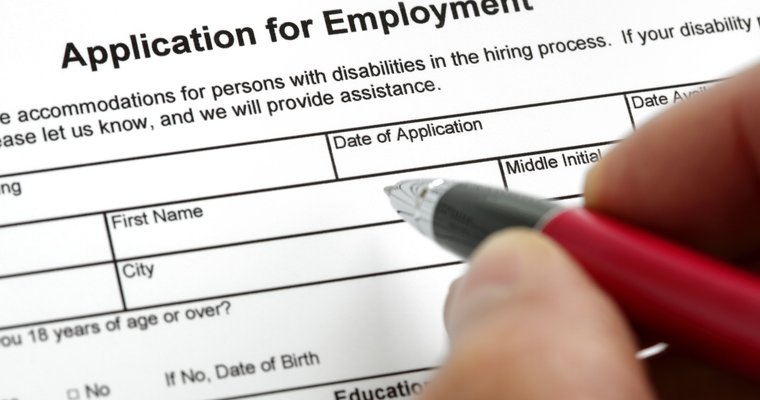Hiring is a critical element to QSR operations. These six tips can help a QSR hire smarter.
The quick-service restaurant industry is booming, but finding the right employees to keep up with demand can be a daunting task. With turnover rates higher than ever, restaurants are scrambling to fill open positions and maintain high levels of customer service. From attracting top talent to retaining valuable employees, building a strong team is essential for any QSR’s success.
The Great Resignation, coupled with economic factors and evolving consumer expectations, has transformed the hiring landscape for QSRs. As competition for talent intensifies, restaurants must rethink their recruitment strategies to attract and retain top-notch employees. From crafting compelling job descriptions to offering competitive compensation and benefits packages, building a strong team requires a multifaceted approach.
Rachael Nemeth, CEO of Opus Training, a frontline training platform for multi-unit restaurants, said challenges may come from generational differences between the hiring manager and potential candidates.
“The expectations need to be set early on what the role is and what the process is. For example, a late Millennial or older hiring a 16-year-old. When different generations are hiring one another, there might be different expectations, different codes of conduct (and) different culture elements that need to be communicated as to how you expect someone to run through the process,” she said.
Josh Secrest, VP of marketing and client advocacy for Paradox, a hiring automation software company, said hiring is extremely competitive — QSRs are not just competing against one another, they’re also competing against, manufacturers, retailers, grocery chains and more.
“For QSRs, the goal is to be really fast,” he said, “so they can beat the competition to these applicants who are probably applying to lots of different jobs.”
Secrest, the former head of global talent acquisition and strategy at McDonalds, said Indeed data shows that applicants typically apply to about 15 jobs a week, so as soon as a QSR gets an application they’re likely competing against 14 other places of business.
Hiring should take place in three days or less, he added. A candidate should be able to apply, get screened and qualified through your system and get scheduled for an interview in under five minutes. He or she should then be able to be interviewed within 24 to 48 hours.
“If you don’t do that, you start to see drop off,” Secrest warned. “That is drastically different than even three years ago where the average was 15 to 21 days.”
A lot of that is because of automation in the industry now. Secrest recommends automating everything up until the point of the interview. It’s then up to the manager to give the applicant a great experience in the restaurant during the interview.
Hiring
To hire, start with your customers. “They’re going to be your most loyal and, frankly, the cheapest applicants because you can get them when they’re in your restaurant and eating there versus through a job board where you may have to spend money to get more applicants,” Secrest said.
Make it easy for your customers to apply when they come into the restaurant. Texting to apply is one good way to gain applicants or using a QSR to lead them to your online application process. The key is to not make applicants have to create a username and password log in.
“Remove as many barriers as possible,” Secrest added.
The faster your move and the more streamlined your processes, the more applicants you’ll have to choose from. By having more choices, you’re more likely to find applicants who are “better aligned with your culture and schedule,” Secrest said, “and ultimately lead to better hires.”
Nemeth recommends taking the time to define clear role expectations. You can start by writing detailed job descriptions that outline the skills required for each position. There’s a lot of emphasis on experience, but that’s different from skill sets.
“You might have a skill that you gained from a retail position that you can transfer into a restaurant position,” Nemeth said.
You might want to hire a person who gained skills from working retail over the candidate who has five years of restaurant experience.
“That level of transparency, specifically around the skills that they have, helps attract candidates who are a better fit and understand what’s being expected of them,” she added.
When looking at candidates, does the shift they want to work match up with your availability? Ultimately, someone whose schedule aligns well will work longer within the position and be more reliable. “If they want more hours than you’re able to give them, they may look elsewhere,” Secrest said. “One of the highest predictors of success — success being they show up on day one, they perform well, and they stay longer than average — is that their schedules align and are an ideal fit for their life.”
Onboarding
The onboarding process should then also be automated. Secrest said 30% of people who accept their offers never show up on day one. There’s a significant drop off even after an offer is accepted because the onboarding process can be clunky and intimidating. Retention in the first month is crucial and losing people after already training them is costly, he added, because the amount of dollars and time invested to hire a candidate as well as train him or her “often means if they leave within their first few weeks, they’re a net negative value to the organization,” Secrest said. “They cost more than they were able to contribute.”
Nemeth said there doesn’t seem to be a lot of communication about what training looks like in the first 90 days. As a result, there’s not a lot of confidence that employees are going to gain those skills quickly, which may lead to them not showing up or not wanting the job.
“I think a lot of what’s missing right now is communication around the details of the training process to let candidates know that there’s a structured training process in place to help them success from day one,” she said.
Here are six hiring tips for quick service restaurants.
High flexibility and growth opportunities
Many QSR employees are students or young professionals seeking part-time work. Emphasize the flexibly scheduling options and opportunities for advancement within the company.
Growth doesn’t have to mean promotion, Nemeth said. It can mean certifications that employees earn.
Invest in employee training
Offer comprehensive training programs to equip new hires with the skills they need to succeed. This not only improves job satisfaction but also reduces turnover.
“You’re not training on those skills, you’re unlocking potential,” Nemeth said. “That means that you should always be thinking about the next skill that you need to unlock in that new hire.”
Highlighting training in the hiring process is one of the keys to hiring success. There are misconceptions about what career pathing means today and it can be small pieces of growth that aren’t necessarily tied to financial incentives. Instead, they’re tied to awards and recognition.
Create a positive work culture
A fun and supportive work environment attracts and retains employees. Encourage teamwork, recognition and celebrate successes.
Create a wall of fame for employees who complete a new skill or task. It’s free and boosts morale. “That goes a long way and costs zero dollars,” Nemeth said.
Have company executives send a personalized note to thank that individual for their dedication or to welcome them to the team. Nemeth said she has seen CEOs text personalized videos to a new hire to motivate them.
Rewards can come in the form of extra-long breaks, accruing PTO or a free meal.
Offer competitive wages and benefits
While QSRs often operate on tight markets, offering competitive wages and benefits can be a game changer in attracting quality candidates.
Leverage technology
Utilize applicant tracking systems and social media to streamline the hiring process and reach a wider pool of potential candidates.
There are still a number of QSRs who are utilizing paper training materials. Nemeth said she hears QSR leaders complain that they have built beautiful training guides, but no one uses them.
“That’s because your managers aren’t necessarily trained at being trainers yet,” she added. “If you have digital tools that can help you deliver that training and help engage your employees, then new hires can learn quickly, but also sort of pace themselves, and managers can track that along the way.”
Focus on customer service skills
Hiring individuals with strong customer service skills is essential for the QSR industry. Emphasize the importance of building relationships with customers in the job description and during the interview process.
In the end, hiring and onboarding comes down to planning, preparation and careful consideration. Moving quickly, having training guides in place and training managers to hire and onboard will lead to QSR success.





